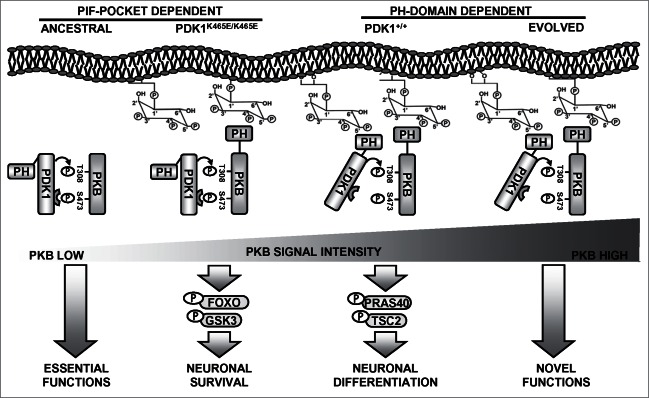Figure 1.
A model for the evolution of the PKB activating mechanisms. In ancestral eukaryotes lacking PH domain-containing PKB-like orthologues, interaction of PDK1 with PKB relied on the PIF-pocket mechanism. This promoted limited PKB activation that was responsible for essential functions such as supporting cell survival, a situation that is reproduced in the PDK1 K465E knock-in mice neurons. At the amoebozoans-metazoans origin, the acquisition of a PH domain allowed PKB to co-localize with PDK1 in response to PtdIns(3,4,5)P3 raises. This enabled activating PKB with high efficiency, which allowed the recruitment of additional cellular substrates regulating novel functions, such as complex neuronal morphogenesis.

